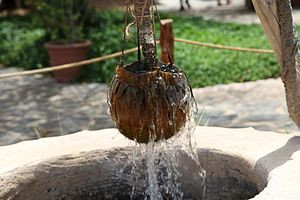Arsenic Found In 99 Water Wells In North Texas; What Are The Dangers Of Arsenic Exposure?

Researchers from the University of Texas-Arlington have recently concluded a study on 100 private water wells around North Texas. Findings show that large quantities of contaminants including arsenic, selenium, and strontium were discovered in samples taken from areas close to natural gas extraction sites.
"We expect this to be the first of multiple projects that will ultimately help the scientific community, the natural gas industry, and most importantly, the public, understand the effects of natural gas drilling on water quality," said lead author of the paper, Brian Fontenot, a UT Arlington graduate with a doctorate in quantitative biology.
The research team collected 92 samples in the vicinity of one or two gas wells within a five kilometer radius, which they termed "active extraction sites." Another nine samples were taken from areas over 14 kilometers away from a natural gas drilling site. Samples were taken over a four-month period in the fall of 2011 and compared to the Texas Water Development Board groundwater database from 1989-1999.
Out of all 100 samples taken throughout the study, arsenic was detected in 99 of the testing sites from which water was taken. The research team did note that concentrations of arsenic were significantly higher in "active extraction sites" compared to the areas farther way from gas drilling sites.
According to the Center for Disease Control and Prevention, arsenic is a naturally occurring element found in soils, sediments and groundwater. It can either be inorganic as a result of mining, ore smelting, and industrial use of arsenic, or it can be organic and found in fish and shellfish.
People are exposed to arsenic through contaminated drinking water or food, with effects varying in terms of the amount of exposure. Someone exposed to large doses of arsenic could experience a number of symptoms including nausea, vomiting, and diarrhea. Exposure to high doses over a period of time could mean a bevy of more serious health concerns, such as skin disorder, diabetes, high blood pressure, and even cancer.
"This study alone can't conclusively identify the exact causes of elevated levels of contaminants in areas near natural gas drilling, but it does provide a powerful argument for continued research," added Fontenot.
For more information on arsenic exposure, call the Agency for Toxic Substances and Disease Registry Division of Toxicology and Human Health Sciences at 1-800-CDC-INFO.
Source: Hu Q, Fontenot B, Schug K. An evaluation of water quality in private drinking water wells near natural gas extraction sites in the Barnett Shale formation. Environmental Science & Technology. 2013.



























